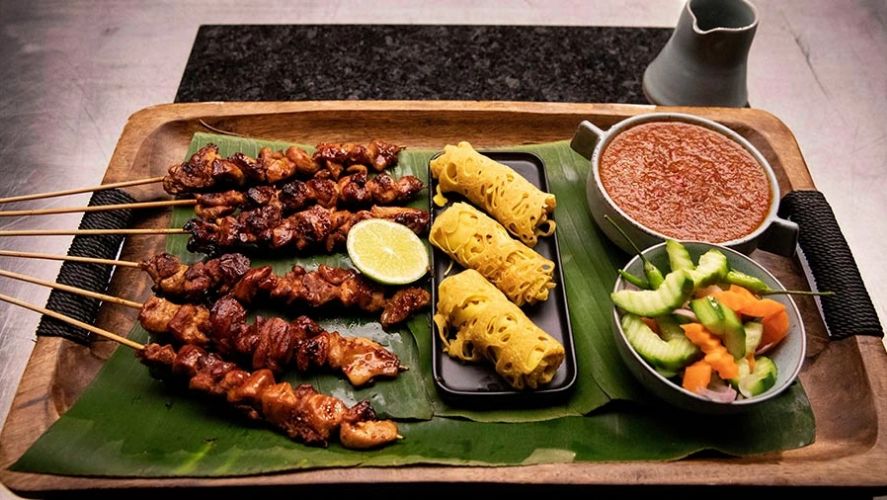
-
Published: 04 March 2023

A staple at every Southeast Asian restaurant around the world, satay, or sate in the local tongue, is said to have originated in Java. One of the most loved versions is satay chicken, served with sweet peanut sauce that has a hint of spice.
Edited by |ANNA sam
Food section - CJ journalist
Java - 4 march 2023
Arguably the best sidekick to any meal, kerupuk -- Indonesian prawn crackers, can also be used to scoop up extra sauce or sambal from a dish.
One of the most commonly featured soto (soup) on Indonesian menus is the comforting soto ayam (chicken soup). Of all the chicken sotos, the ones from East Java -- such as soto ayam Madura or Ambengan -- are among the most popular. They have a clear broth and include a generous amount of garlic, shallots, turmeric, and chunks of chicken meat.
Soto ayam: One of the most commonly featured soto (soup) on Indonesian menus is the comforting soto ayam (chicken soup). Of all the chicken sotos, the ones from East Java , such as soto ayam Madura or Ambengan -- are among the most popular. They have a clear broth and include a generous amount of garlic, shallots, turmeric, and chunks of chicken meat.
Satay can be made from various types of meat. Meat commonly used includes chicken, lamb, goat, mutton, beef, venison, and rabbit; seafood such as fish, shrimp, and squid; or offal such as liver, intestine, and tripe. Some have also used more exotic varieties of meat, such as turtle, crocodile, horse, lizard, and snake meat. Chicken is the most common, but other meats are frequently used. Satay is made by cutting the meat into small cube shapes, about thumb-size. However, such recipes as Ponorogo use chicken fillets cut into an elongated finger-like shape, thus one skewer holds only one piece. Yogyakarta has a special goat satay called Sate Klatak the difference between other satays is using iron bars for the stick.
A fancy presentation of Balinese pork satay, the skewers are erected holds by cucumber, Ubud, Bali.
The skewers used for chicken satay are traditionally made from lidi, a midrib of coconut fronds. Bamboo skewers might be used instead. For firmer meats, such as lamb, goat, and beef, a thicker bamboo skewer is used. The skewers are usually soaked in water before using to avoid burning during grilling. Each skewer usually holds four pieces of meat, some only three pieces. A goat meat satay might insert a cube of fat between meat cubes. Turmeric is required to marinate satay to give the dish its characteristic yellow color. Another popular marinade is sweet soy sauce mixed with coconut oil or palm margarine. The skewered meat is seasoned, marinated, and then grilled on charcoal embers.
Satay may be served with a spicy peanut sauce dip, or peanut gravy, served with slices of lontong or ketupat (rice cakes), garnished with a sprinkle of bawang goreng (crisp fried shallot), and accompanied by acar (pickles) consisting of slivers of onions, carrots, and cucumbers in vinegar, salt, and sugar solution. Mutton satay is usually served with kecap manis (sweet soy sauce) instead of peanut sauce. Pork satay can be served in a pineapple-based satay sauce or cucumber relish.
